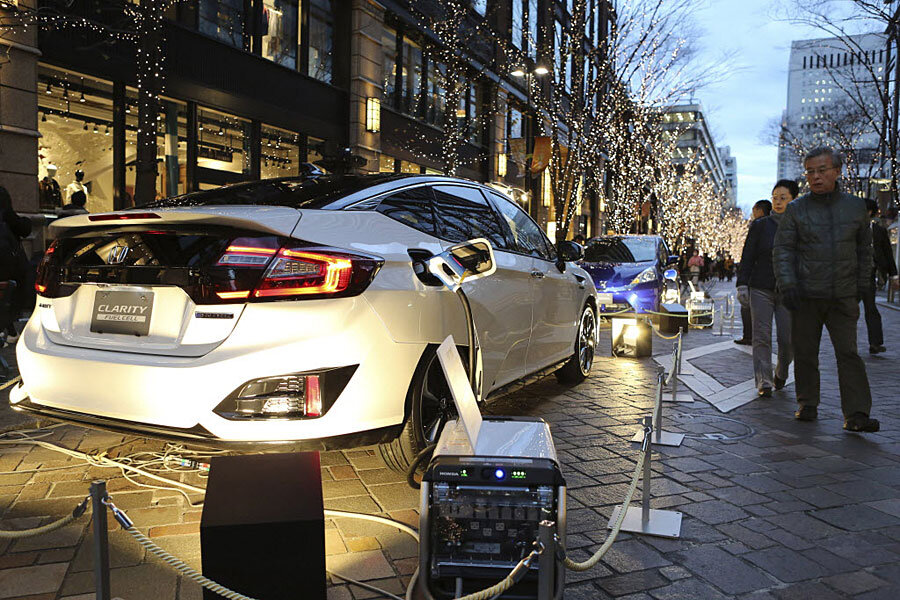Scientists move one step closer to turning water into hydrogen fuel, affordably
Loading...
Scientists have cleared one hurdle on the path to deriving hydrogen fuel from water affordably, a breakthrough that could drastically change the way we power vehicles.
Hydrogen has the potential to fuel incredibly environmentally clean cars. But making that fuel hasn't been so efficient or economical. Pure hydrogen gas does not occur naturally on Earth, so scientists must devise ways to separate hydrogen from naturally occurring compounds, like H2 O.
Until now, cars that run on water have been out of reach. Electrolysis, the process of breaking H2 O into hydrogen and oxygen gases by passing an electric current through water, and other possible methods have been prohibitively expensive or difficult.
But a team of scientists have come up with a different mechanism to produce hydrogen fuel from water. These researchers have created a biomaterial that catalyzes the splitting of the water elements, which they describe in a paper published in the journal Nature Chemistry.
The biomaterial, called P22-Hyd, is made up of a modified enzyme, hydrogenase, protected within the protein shell of a bacterial virus. Taken together, the material forms a nano-reactor that catalyzes hydrogen formation 150 times more efficiently than the enzyme would in its original form.
The mechanism goes both ways. P22-Hyd breaks the chemical bonds in H2 O to produce hydrogen and oxygen, but it can also combine the two gases to generate power.
That reversal is how hydrogen fuel cell cars work. Hydrogen gas is mixed with atmospheric oxygen, generating electricity that powers the car's motor or motors. The only byproduct is water vapor, unlike standard gasoline fueled cars which produce toxic fumes in addition to multiple greenhouse gases.
"The reaction runs both ways -- it can be used either as a hydrogen production catalyst or as a fuel cell catalyst," study lead author Trevor Douglas, of Indiana University Bloomington said in a news release.
P22-Hyd could make hydrogen fuel production more affordable and environmentally friendly than other catalysts used.
Platinum is one such material. The rare metal is expensive and is often used in high-end hydrogen-fueled cars.
"This material is comparable to platinum, except it's truly renewable," Dr. Douglas said. "You don't need to mine it; you can create it at room temperature on a massive scale using fermentation technology; it's biodegradable. It's a very green process to make a very high-end sustainable material."
Scientists have also looked to sources of hydrogen other than H2 O to fuel hydrogen fuel cell cars. A team of researchers reported a new way of producing hydrogen from biomass in a paper in April 2015. Their method used corn debris, including cobs, husks and stalks. That corn biomass produces hydrogen and carbon dioxide as it decays.
Using this discarded organic matter could make hydrogen fuel a more viable possibility. The Christian Science Monitor's Joseph Dussault reports:
Cost effective and productive in volume, this method could breathe new life into the hydrogen car. Biomass relies on readily available (and usually discarded) material, which reduces initial fuel costs. The method also increases the reaction rate three times over – as such, the fuel can be produced in smaller, gas station-sized facilities, further driving down cost. These facilities could be stationed alongside processing plants, potentially spurring local industries.
[Editor's note: This article has been updated to clarify the byproducts of gasoline-fueled cars.]






